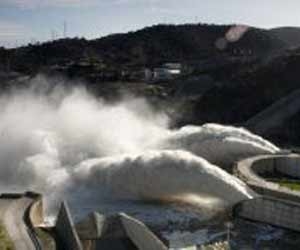Hydroelectric Energy Jobs
What You Need to Know
At this time, hydroelectric energy is the most-used renewable energy source in the US.

The history of using moving water to power basic machines can be traced back thousands of years, and the first hydroelectric power plans in the United States opened in Wisconsin in 1882, over 100 years ago. Hydropower remains popular today for a number of reasons: The energy is renewable, cheap, and more environmentally-friendly than fossil-fuels as hydroelectric plants release little to no air pollution.
There are some drawbacks to hydroelectric power, however, as the damming of rivers and streams to create hydroelectric power plants can damage natural habitats. The damage enacted by dams on the environment is one reason why green-minded energy professionals are looking to expand less environmentally-harmful energy sectors, like wind and solar power. Another important thing to know about hydroelectric power is that the majority of US hydroelectric power plants are in the West. That means that if you’re looking for work in the hydroelectric sector, western states are a better bet, especially the Oregon, California and Washington. In fact an estimated 31 percent of the entire country’s hydropower comes from Washington State alone, which is home to the largest hydroelectric power plant in the country, the Grand Coulee Dam.
How Does Hydroelectric Power Work?
Like wind power, hydroelectric power is generated by the rotation of propeller-like turbines which are set into motion by an active outside element – in this case, moving water.
There are two main types of hydroelectric plants, broadly known as run-of-the-river design and the storage system design. In the run-of-the-river design, the natural flow of moving or falling water pushes against turbine blades to make them turn. In a storage system design, moving water is accumulated and stored in reservoirs and then released to push turbine blades and generate electricity on an as-needed basis.
Although the majority of hydroelectric power is created by constructing dams which make use of inland water sources like rivers, other types of hydroelectric power exist as well. Tidal power makes use of the motion of incoming and outgoing tides to produce electricity, while wave power channels the energy of the ocean’s wave and converts it to usable power. Another interesting type of power is ocean thermal power, which uses varying temperatures between the ocean’s surface water and its depths to create power. Ocean thermal energy can only be used in tropical places and is difficult to use, however, and it is far less prominent than other types of hydroelectric power. Technological improvements are being developed which will allow the energy created by varying ocean temperatures to be more easily and economically transported to land where it can be used, so ocean thermal energy may become a more popular option in the future.
Job Outlook in the Hydroelectric Energy Sector
Although other types of natural energy, like wind and solar power, are gaining in popularity and becoming more widely used, hydroelectric power remains the number one source of renewable energy in the US and demand for qualified hydroelectric energy professionals should remain high. Working in hydroelectric power could involve constructing dams or working in management at a hydroelectric power plants. Development jobs in the hydroelectric sector might include working as an engineer in the process of developing and building dams, while an example of an assessment and awareness job would be a sustainability analyst who helps determine how dams can best be built and maintained with minimal erosion or other environmental degradation.

